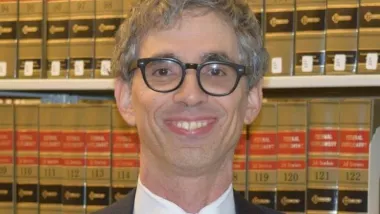The battle for the White House has reached my inbox, as even listservs about urbanism crackle with endorsements and denunciations of Obama, McCain, Palin, etc. But all of this frenzied activity assumes that what a President says or thinks is particularly relevant to urban issues. But this need not be so. The policy areas most relevant to sprawl and urbanism, land use and transportation, are not likely to be directly affected by the results of the presidential election. In particular, zoning and similar land use issues are generally addressed by state and local governments. Even the most pro-urban president is unlikely to take on anti-infill NIMBYism (1), make strip malls more walkable. or make streets narrower.
The battle for the White House has reached my inbox, as even listservs about urbanism crackle with endorsements and denunciations of Obama, McCain, Palin, etc.
But all of this frenzied activity assumes that what a President says or thinks is particularly relevant to urban issues. But this need not be so. The policy areas most relevant to sprawl and urbanism, land use and transportation, are not likely to be directly affected by the results of the presidential election.
In particular, zoning and similar land use issues are generally addressed by state and local governments. Even the most pro-urban president is unlikely to take on anti-infill NIMBYism (1), make strip malls more walkable. or make streets narrower.
On the other hand, transportation issues are the federal government's business. A significant chunk of road and public transit spending is supplied by the federal government. So in theory, a President could shift transportation spending from highways to public transit or vice versa.
But in recent decades, Congress rather than the White House has decided transportation funding issues. For example, several Administrations (including the last two) have sought to close down Amtrak(2)- yet Amtrak survives. And public transit seems to be independent of Presidential ideology. Under President Bush (not exactly a smart growth champion) federal support for public transit has consistently increased.(3) By contrast, under the Clinton Administration, federal support for transit decreased for years, only to recover in Clinton's last years as the Republican Congress moved towards a more pro-spending position. (4) Because transportation funding is politically popular, Presidents rarely veto transportation funding bills. As a result, Congress gets what it wants even if a President's priorities differ.
This is not to say that the identity of the President will have no effect upon urbanism. Often, policies not intended to affect urban development will be more important than the Administration's official attitude towards sprawl or transit. For example, the current Administration's willingness to tolerate a weak dollar may have contributed to the increase in gas prices, thus making public transit more attractive.
In sum, land use and transportation issues should be highly relevant to your votes for governor and senator, and somewhat relevant to your vote for Congress. But I'm not sure how important such issues should be in deciding who to vote for in the Presidential race.
(1) NIMBY= Not In My Back Yard
(2) See, e.g., http://www.msnbc.msn.com/id/6942852/ (President Bush)
http://query.nytimes.com/gst/fullpage.html?res=9F07E2DF1738F935A25752C0… (President Clinton)
(3) http://apta.com/research/stats/factbook/documents08/2008_fundcap_final… , Table 41.
(4) http://www.census.gov/prod/2002pubs/01statab/stlocgov.pdf , Table 420.

Planetizen Federal Action Tracker
A weekly monitor of how Trump’s orders and actions are impacting planners and planning in America.

Chicago’s Ghost Rails
Just beneath the surface of the modern city lie the remnants of its expansive early 20th-century streetcar system.

Amtrak Cutting Jobs, Funding to High-Speed Rail
The agency plans to cut 10 percent of its workforce and has confirmed it will not fund new high-speed rail projects.

Ohio Forces Data Centers to Prepay for Power
Utilities are calling on states to hold data center operators responsible for new energy demands to prevent leaving consumers on the hook for their bills.

MARTA CEO Steps Down Amid Citizenship Concerns
MARTA’s board announced Thursday that its chief, who is from Canada, is resigning due to questions about his immigration status.

Silicon Valley ‘Bike Superhighway’ Awarded $14M State Grant
A Caltrans grant brings the 10-mile Central Bikeway project connecting Santa Clara and East San Jose closer to fruition.
Urban Design for Planners 1: Software Tools
This six-course series explores essential urban design concepts using open source software and equips planners with the tools they need to participate fully in the urban design process.
Planning for Universal Design
Learn the tools for implementing Universal Design in planning regulations.
Caltrans
City of Fort Worth
Mpact (founded as Rail~Volution)
City of Camden Redevelopment Agency
City of Astoria
City of Portland
City of Laramie



























